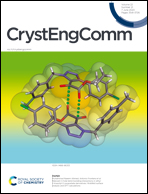Microstructure characteristics of non-monodisperse quantum dots: on the potential of transmission electron microscopy combined with X-ray diffraction
Abstract
Although the concept of quantum confinement was introduced more than thirty years ago, a wide application of quantum dots is still limited by the fact that monodisperse quantum dots with controlled optoelectronic properties are typically synthesized on a relatively small scale. Larger scale synthesis techniques are usually not able to produce monodisperse nanoparticles yet. In this contribution, we illustrate the capability of the combination of transmission electron microscopy and X-ray diffraction to reveal detailed and scale-bridging information about the complex microstructure of non-monodisperse quantum dots, which is the first step towards further upscaling of the techniques for production of quantum dots with controlled properties. As a model system, CdSe quantum dots synthesized using an automated robotic hot-injection method at different temperatures were chosen. The combined microstructure analytics revealed the size and shape of the CdSe nanocrystals and the kind, density and arrangement of planar defects. The role of the planar defects in the particle coarsening by oriented attachment and the effect of the planar fault arrangement on the phase constitution, on the crystallographic coherence of the counterparts and on the optoelectronic properties are discussed.



 Please wait while we load your content...
Please wait while we load your content...